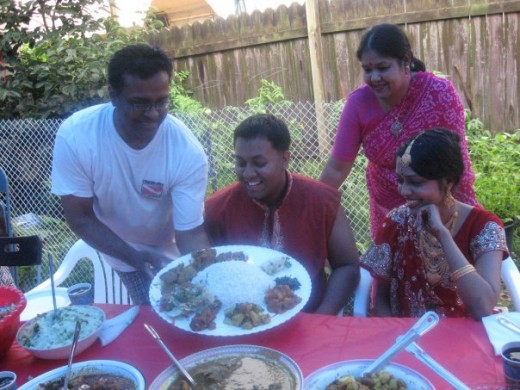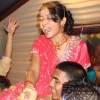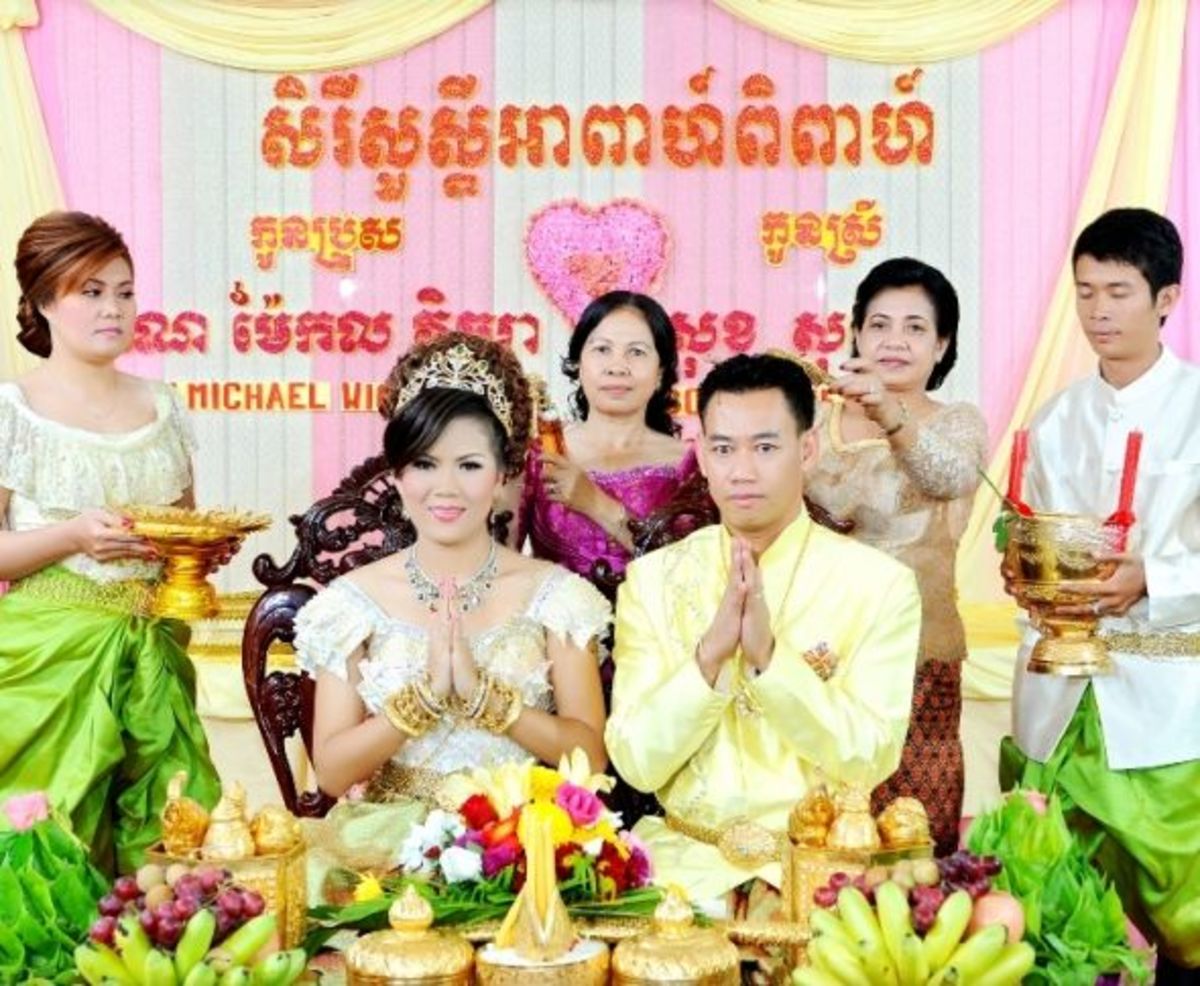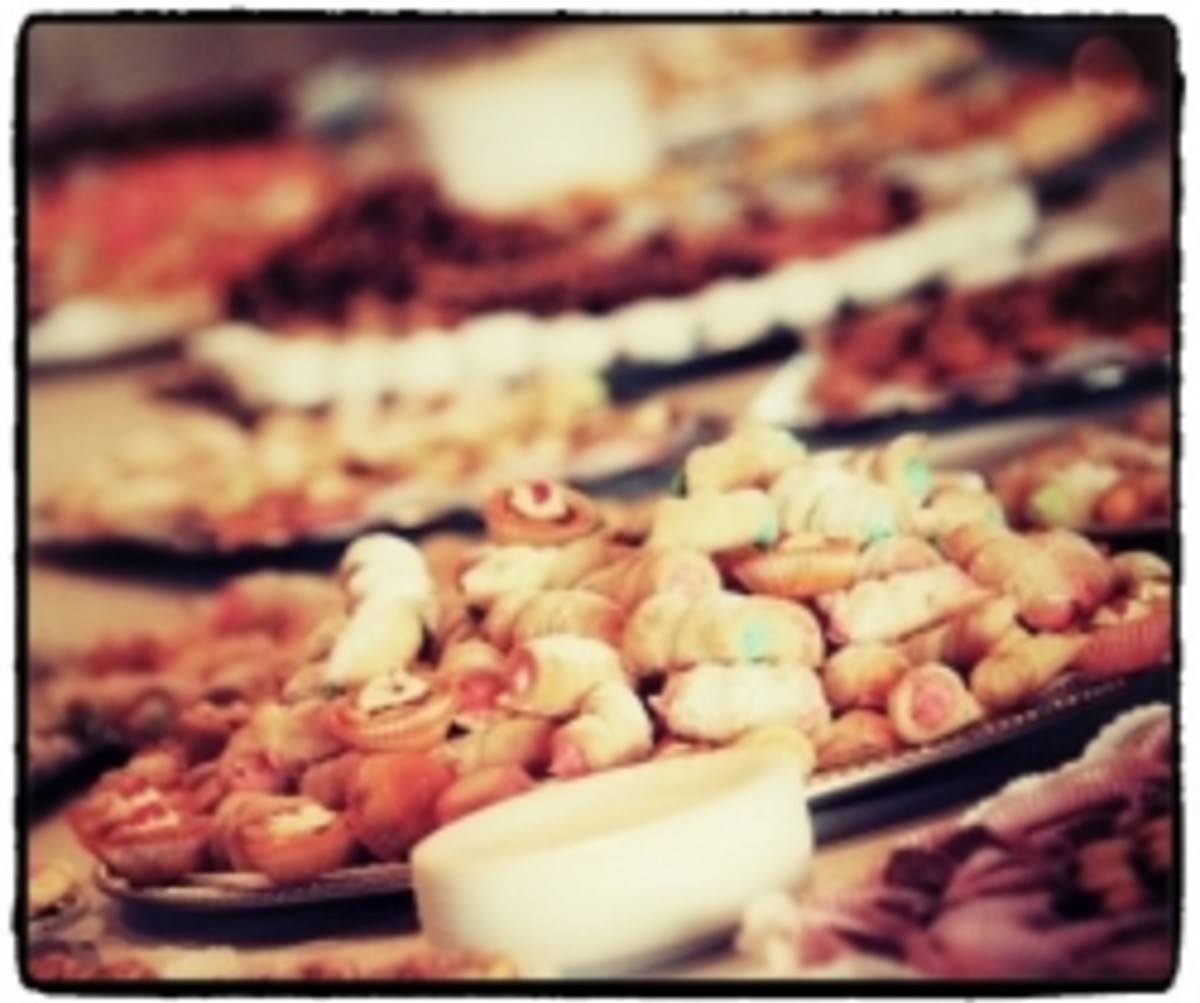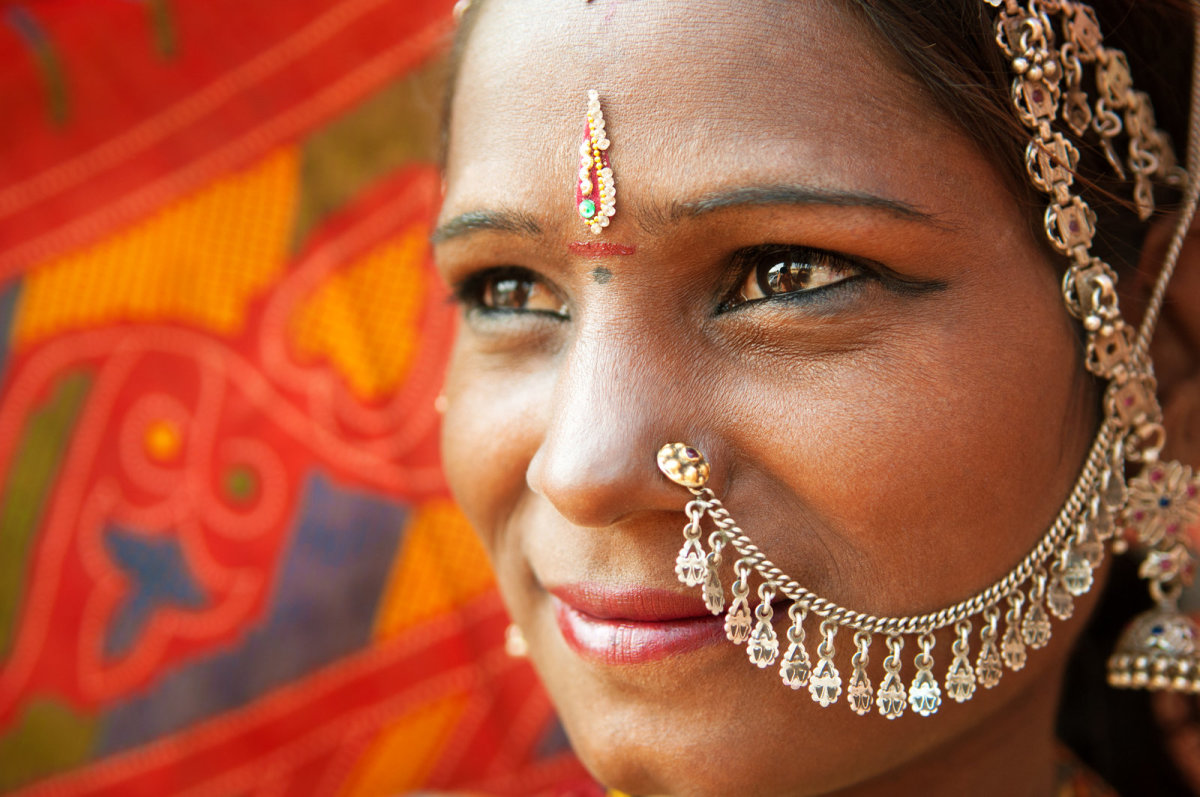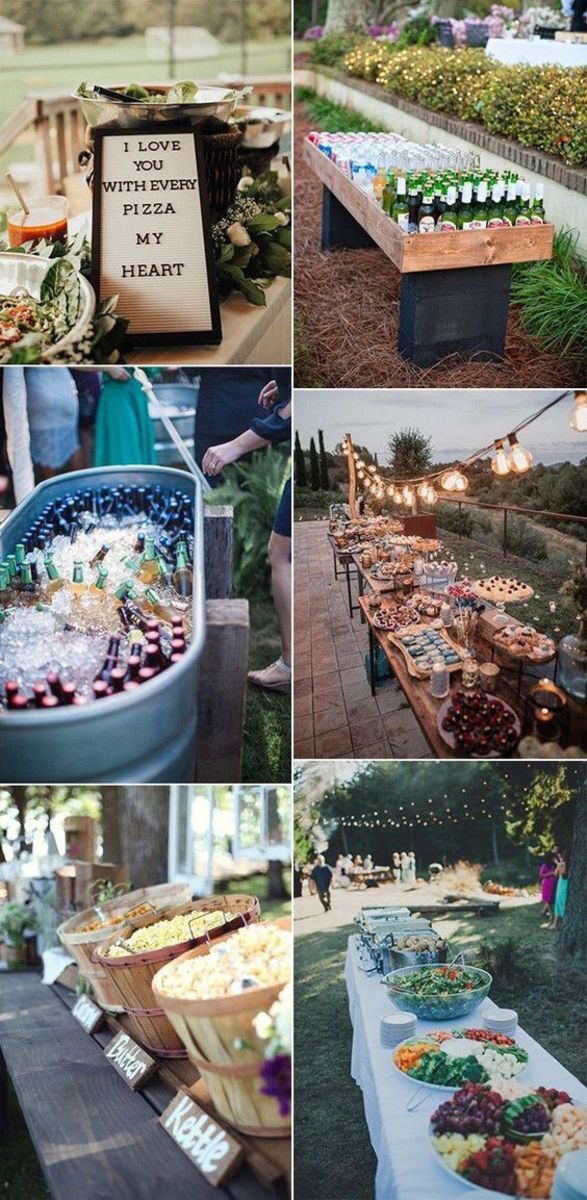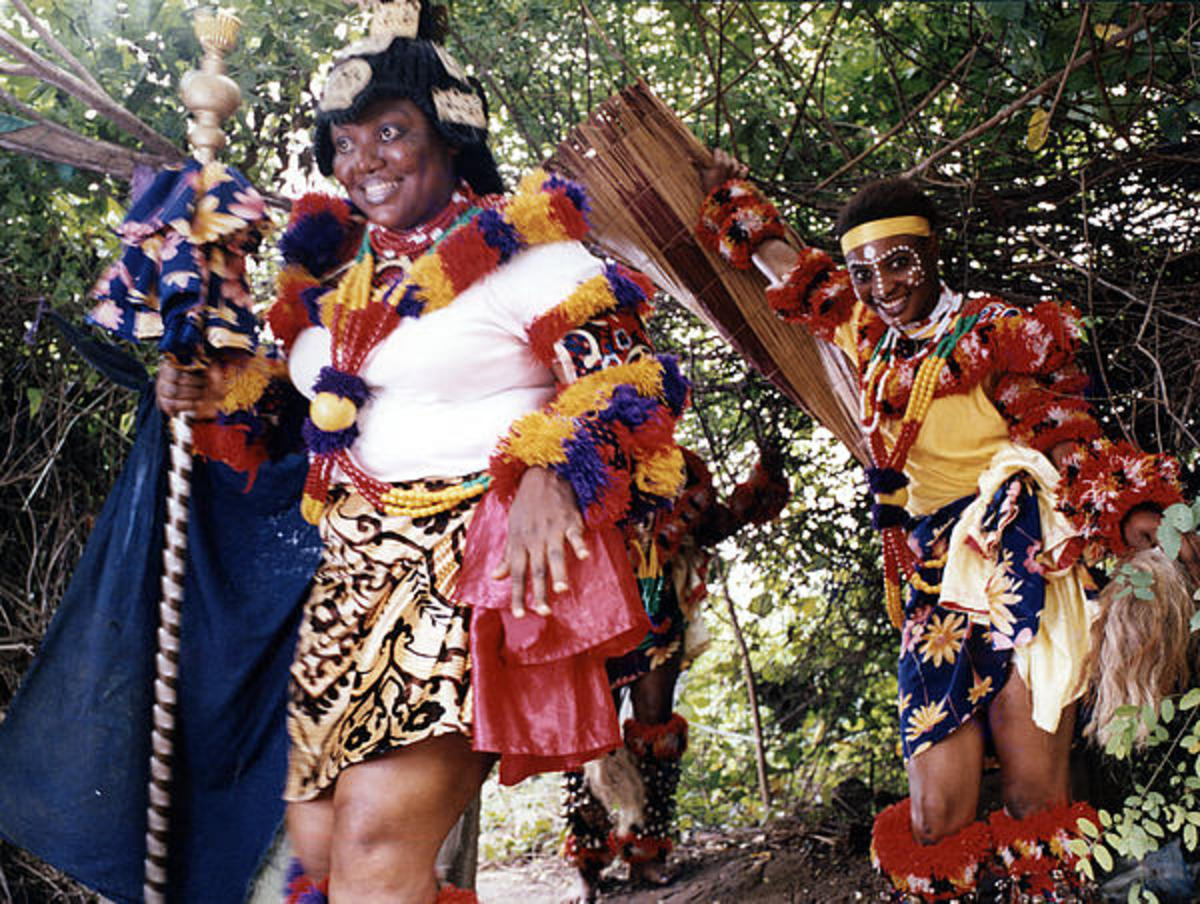Understanding a Traditional Bengali Wedding
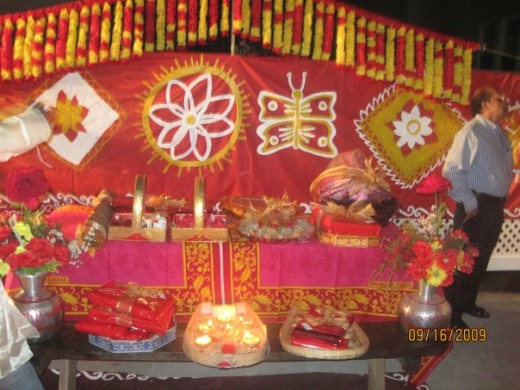
I often find myself in the same boat when talking about "weddings" with my friends. They ask me so many questions about the traditional Bengali wedding, why we do certain things in my culture, and what each ritual signifies. Everything I tell them, of course, is from my own knowledge—information and stories that have been given to me by my parents, and grandparents. So, I was finally able to come up with a summarized version of what a Bengali Wedding (from the country of Bangladesh), especially a traditional one, is supposed to look like.
"Gaiyer Holud"
The "Gaiyer Holud," is translated as "Yellow Body." This takes place the night before the actual wedding ceremony. A mixture of turmeric and spices which are made into a paste, are rubbed onto the skin of the bride and groom. This paste is rubbed onto the body for the purpose of "purifying" the body, as well as to soften the skin. For Bengalis, the procession begins with the family and friends of the grooms side, arriving at the Bride's home. Here they are welcomed by the Brides family who line up in front of the house, and place garlands of flowers around their neck and feed them sweets. Music and drums play in the background, as the Groom's family dance their way through the entrance.
The home is most likely decorated with flowers and garlands, colorful lights and sometimes even decorated saris! As the Grooms family and Brides family finish the "welcoming" process, they serve a light snack of tea and cakes, samosas, singaras, and other types of biscuits and sweets. After this light snack, all guests and family members take a seat in front of the stage. The Brides sister-in-laws bring her out of the house, and she sits down on the stage where her side of the family, and then the grooms side of the family will take turns rubbing the dye on her body, and feeding her sweets. However, before the event begins, there is a small prayer to bestoy good luck and wishes on the Bride which is usually led by an elder person in the family.
When all family members have rubbed the dye on her, she is carried into the house by her future brother-in-laws, where they wipe off her body of the spices and dress her up in a new sari. Garlands of flowers are placed on her head, arms, wrists, and ears and then she is placed back on the stage. Here, she sits alone as family members give her a final blessing and quietly leaves her house. From here, they will continue onto the Groom's house, where a similar procession will follow in an opposite version.
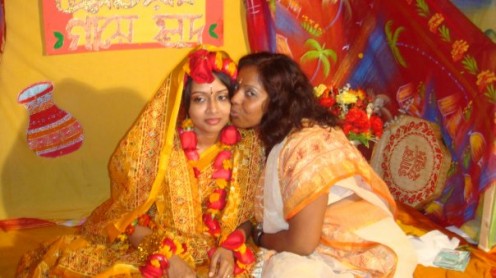
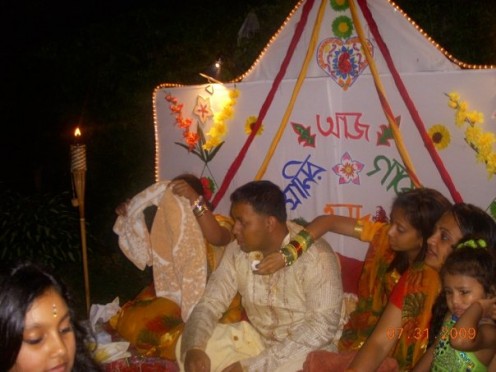
"Wedding Day" and "Reception"
The Wedding Day for Bengalis is a huge event as well, for you can always count on having a guest list of at least 200 people (mine had 350). For the Bride, she can wear anything from a white bridal gown, to a lehenga (which is a decorated skirt and top), or even a sari. Although in Bangladesh many women have now opted for the white gown, it was traditional for women to wear a a white sari with red embroidery, with streaks of beautiful gold thread, and for the men to wear a suit or decorated panjabi (a long top reaching the knees, with tuni style pants).
Before the Bride leaves her house for the religious venue, she sits on her mothers lap. Her mother then feeds her a glass of milk, a symbol of the many years that she has spent raising and nurturing her daughter (this is only for the daughter, not the son). When she exits the doorway, a coin is placed in her head which she will throw over her shoulder, but she is not allowed to look back. This is a sign that she is leaving her father's home, to enter into her husband's home, and is done also for good luck in the future.
Then, she is taken to the religious venue either by a car/limo, or carried in a "palkhi." A palkhi is a decorated box which is covered by curtains on both sides, and carried on long poles on four corners. This is also the method in which the Bride and Groom are carried to the reception after the wedding is over. The reception can also have different ways in being celebrated, but usually involves a large amount of food set up in a buffet style. Here you can find everything from Dhal and Naan (bread), to rice, tandoori chicken, many curries, samosas, and all types of rich food.
"Firani"
This is the day after the Wedding, that takes place at the home of the Brides parents (it is now called the home of the Brides parents, because she no longer lives there). In the morning she and her husband are picked up from their house, and brought over to her parents house with a couple of his family. Here, they arrive only to see that a "gate" is being held by all of her side of the family, usually her cousins and siblings. This gate can be a decorated pole, or something larger which is used to barricade the newly married couple. A fun event for everyone, the gate will not be removed until the couple gives them some money. And this involves a lot of playful arguing and banter.
The Brides family, the newly married couple, and some of the Grooms family sit down to have a huge feast for lunch, all cooked at home (here, the cousins wash the hands of their new "brother-in-law" in return for more money). In the evening, the rest of the Grooms family arrive, and they sit down to an even feast for dinner. After that is done, they all sit down to see the dowry that the Brides side of the family has to offer. Here, there is the list of who gave what type of jewelry, amount of money, or other type of gift. Then a final prayer is said, and the Brides family gives her a final goodbye (this involves many tears and grief).
Upon leaving her parents home with all the gifts, they arrive at their home (or the Groom's home) where another gate is held, usually by his cousins and siblings. More playful banter take place, and more money is given out. Entering the room, they see that is decorated with flowers and garlands, mostly covering the bed upon which they will "consummate" the marriage. And that is the end of the Bengali wedding, and they are given the hope that they will live happily ever after.
